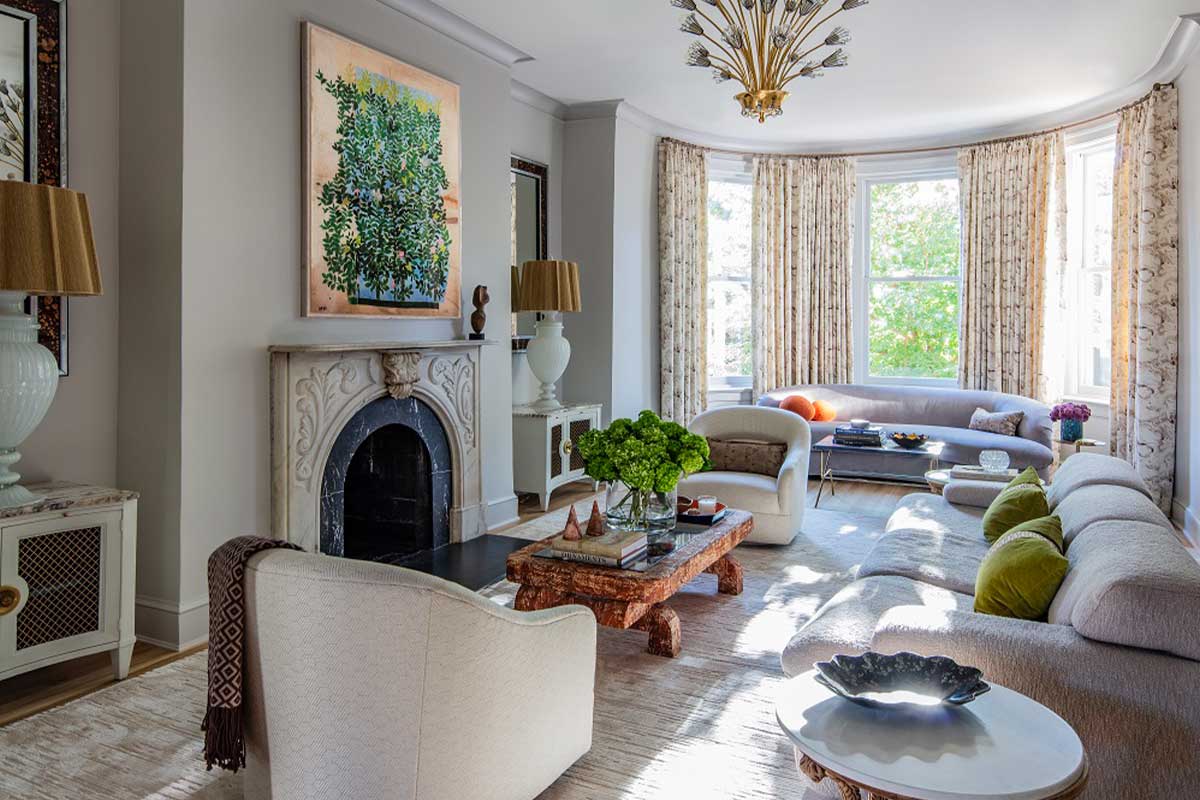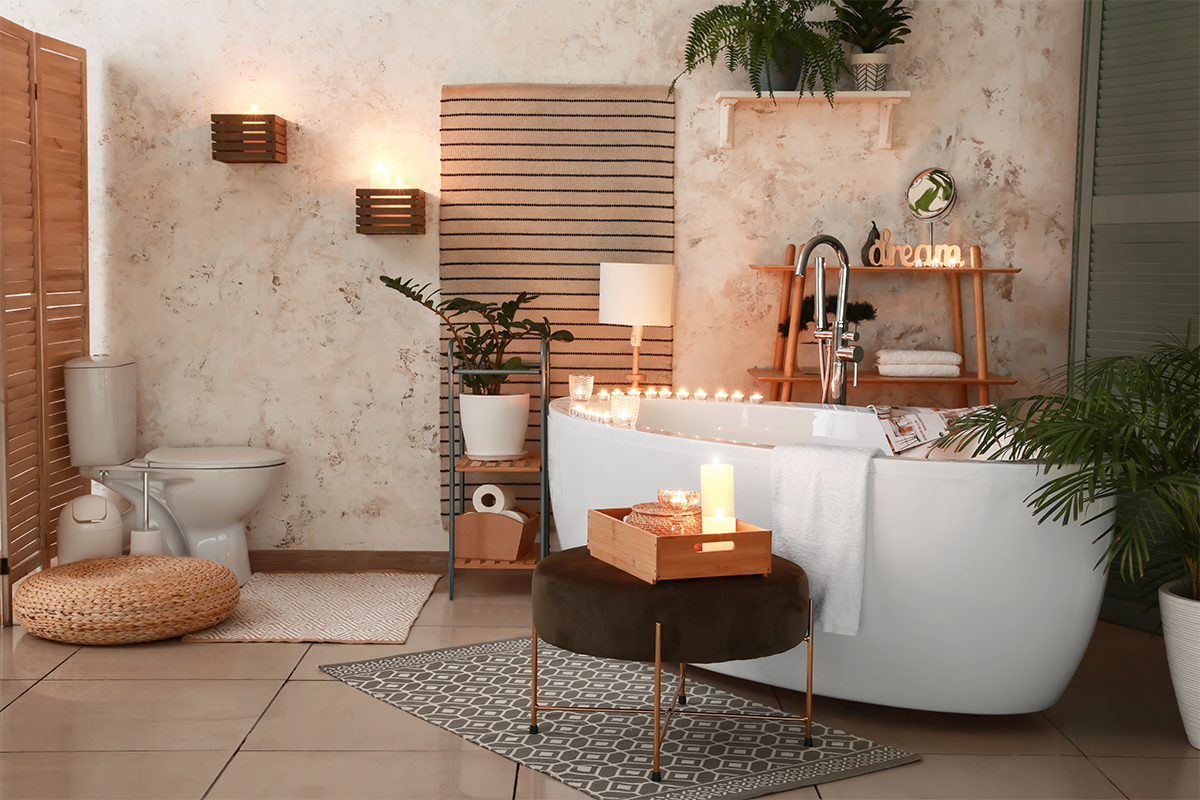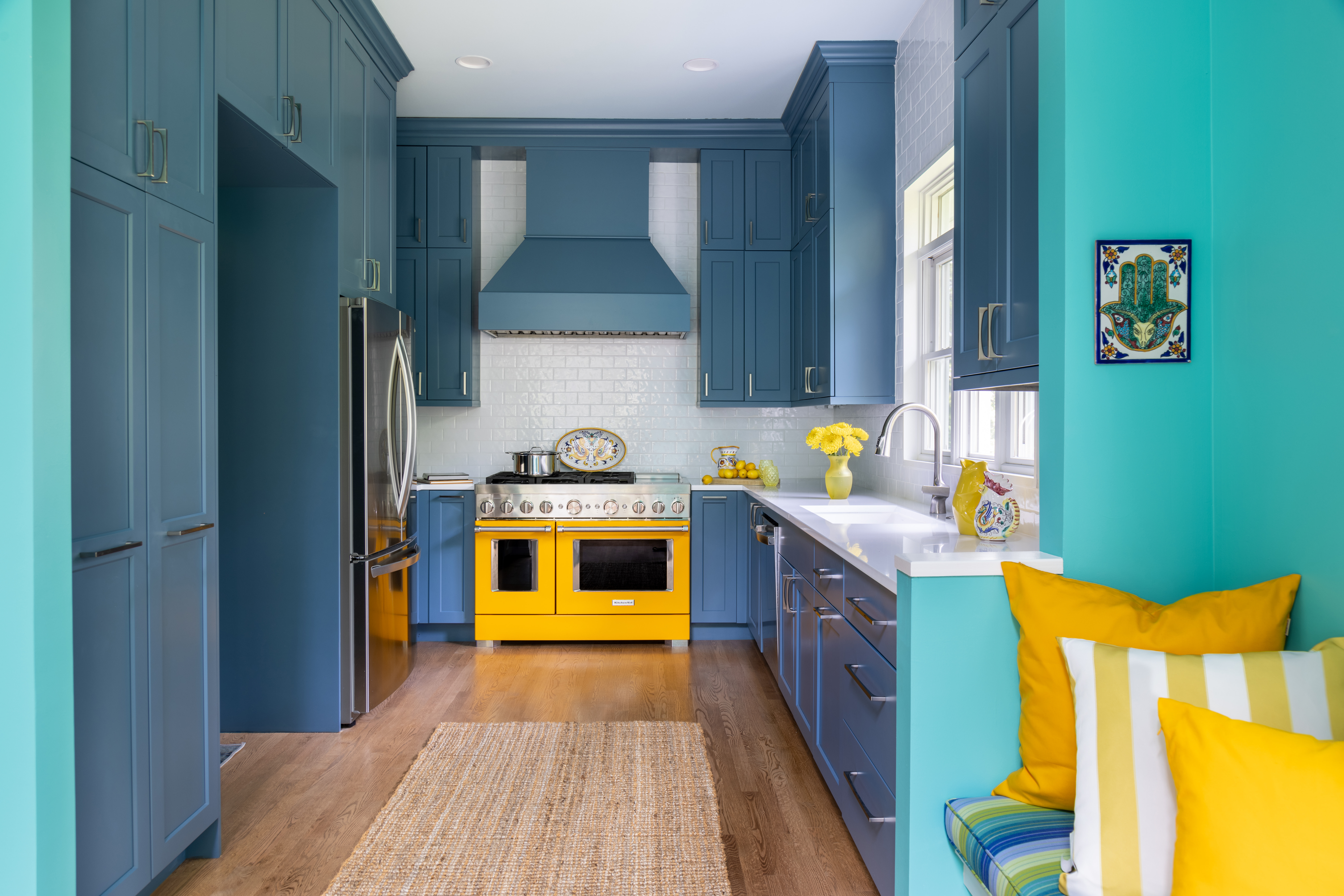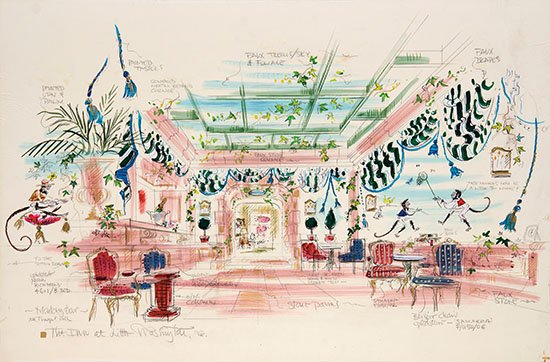
Almost no one needs an introduction to Patrick O’Connell’s The Inn at Little Washington, the five-star restaurant and hotel that has topped both national and international hospitality lists. But O’Connell knows that while his cuisine brings numerous accolades, most people don’t realize how much the entire compound offers, in terms of accommodations, inspiration and history. In his latest book, “The Inn at Little Washington: A Magnificent Obsession,” (April 2015) O’Connell takes readers on a personal tour of how the renowned luxury country inn and restaurant began and his work with London designer Joyce Conway Evans that has made the inn what it is today. –Lynn Norusis
The book reads as a design book, but it is more of a memoir of the Inn. Tell me about your journey in writing the book.
The background is as important as the reality. Everyone’s journey and life’s trip builds on itself and follows a consistent path. I wanted to illustrate that. It’s very colorful and unlikely that this could have occurred. Even as you write about it and put the book together, you think, “Did this really happen?” It’s unlikely enough that someone would come out into a village of 133 people, over an hour and a half outside the city and try to do what we’ve done.
It was fascinating that in the first year you dismantled the dining room each night and then the next day put it all back together.
You had to be very young and very naïve. Those things, if I were reading the book, would be wonderfully inspirational. I wanted people to know that this wasn’t some buddy who inherited some money, came out and made a few phone calls to whip this whole thing together. It was done out of nothing, from nothing using scraps and pieced together, yet maintaining and holding onto the inspiration and that vision. It came full circle and now has an identity that is unique in the world. I often say, “Imagine what I could have done with a real building or a good house.” I don’t ever believe that people should let reality get in their way, or even financial constraints. Oftentimes I’m so relieved, looking back, that we didn’t have huge sums of money when we started. The problems had to be very creatively solved, and sometimes more imagination is drawn upon when you don’t have a simple financial solution. It tests your creativity, and this is why working with Joyce Evans has been so much fun—if you can’t do a carved ceiling from the 1700s, see what you can do with applied wallpapers, and sometimes it achieves a more interesting effect.
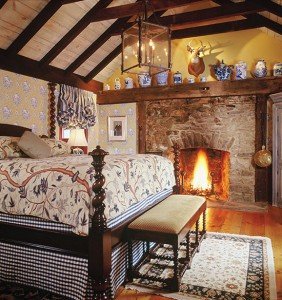
Throughout the book, we’re getting stories of the pieces at the different properties. In the piece Evans wrote, she mentions that you were able to keep in tune with her design with some of the pieces you picked up.
When you develop a strong connection with a collaborator, you begin to channel each other, and for me that is the most exciting aspect of the creative process; if you can get into the mind and head of the person you’re working with, you can share visions. Imagine her doing this initially without ever, ever coming to the United States. She had no sense of what was here or what was appropriate or what would work, yet because our inspiration came from the great country house hotels of Europe, especially those in France and England, we had a dream vision of what it would feel like. It was about bringing the feeling to life; how you got there was beside the point. We all knew what feeling we were trying to convey, even though it was pretty much nonexistent in the United States at that time—a public space, or a restaurant or a country house that would serve wonderful food and have the sense that you were in a great home but have all the amenities of a world class hotel at the same time. It’s changed now, and Americans have embraced the idea—look at the fascination we have with “Downton Abbey.” It’s very foreign to Americans, yet it is historically fascinating because it is the root of so many traditions and ways of living that are now part of our distant heritage, but they are all relevant. The U.S., in a way, was handicapped by never having an aristocracy or having a king or royal family to set the tone and establish the highest order of things, which the rest of the population could channel or imitate or look to as a model. It all came from a European sensibility. For me the fascination is precisely what I’ve done with cuisine. I grew up as an American eating the American food of the ’50s and yet wanted to bring it forward, wanted to keep those flavors that were part of my heritage but allow them to evolve to the same level of French ‘ode cuisine. Putting the book together made me realize that everything has been a parallel journey. What I’ve done with food has also been reflected in what we’ve tried to create in the ambiance of the place.
It seems that this entire journey—the food, atmosphere, ambiance and now the book—it’s a trifecta. Not only is the history influencing your food, the history is also being influenced by the Inn itself; how the rooms honor the food celebrities, and in each room you have the books about the person to where it is this entire learning experience.
It is all intended and seen as a seamless film that you walk into. Warren Beatty was out as a guest. He intended on only staying one day; he didn’t want to leave and ended up staying for three. He said to me at one point: ‘I can’t believe what you do. In our business, in the movies, they just have to look at it, but here they have to walk into it AND you have to feed them.’ It’s another dimension, but it’s a more complete one. It is rewarding to see it having the effect on people that a great film, a play, a work of art might have. It is a little bit changing in a way. When they get to that place where they are reached and all their needs are taken care of as well; it is a four-dimensional film.
Throughout the process of writing, were you inspired again? Was there are specific area, room or cottage where you fell in love with it again?
You do forget because so much happens in a day, in a week, in a month here. And there is such intensity that you rarely have time to look back and reflect on all that has happened. At the last minute we decided to insert the chapter, “Magnificent Celebrations.” Even those who made it happen tend to forget that we did an event for Queen Elizabeth, the first and [only] dinner party in the Peacock Room at the Freer Gallery. These things are all woven into the history and the legend of the place and helped differentiate it from a restaurant. It is a lifestyle, a taste, an art of living that almost anyone can glean something they can use in their own world to make it more enjoyable. The idea is whether or not we are operating in that set[ting] of the Inn, whether it is off-site, we convey a little bit of how the magic is created, of how you can create the film and the illusion anywhere.
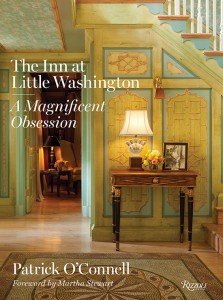
One reference you made is that “Little Red Riding Hood” inspired you to be a chef. Was there any inspiration you had going back to your childhood for the design and atmosphere?
My belief is that everyone has a specific geographical place in the universe, and when they find it everything will fall into place. We tend to be very detached in our culture, from thinking in those terms, because people are moving all the time. But it is a very primitive idea. If you put a dog in a room, a dog will usually circle the room three times before he finds his spot. In a bigger sense, I think we all have a spot in universe, and if we open ourselves to finding it, and we do ultimately find it, everything will fall into place. Geographically, for me, this county was my spot, and I knew it from an early age and certainly by the time I was 21. Further, I believe everyone’s journey, everyone’s life is an act-out based on their survival. So they are conceptualizing, crafting and dreaming their life in a way that will most assuredly help their survival. Most people are not consciously aware of this. For me it was very clear that I needed not only the geographical spot, but I needed to be able to create my own universe because I had a condition called amplified sensation—if I saw something raw, nasty and ugly, it had a greater impact than it might have on the average person. I tend to see and feel in exaggerations, so today’s world is becoming more difficult to cope with, and it’s becoming harsher and more grim as the years go by. Creating a refuge from that and being able to share it with other people is a wonderful thing. All of us, to one degree or another, do it with our own private spaces in our own homes; we try to take the hard edges and the meanness and that nastiness off of the physical realities we have to cope with. To take it to the next level and create an idealized, miniature world is very rewarding and very therapeutic.
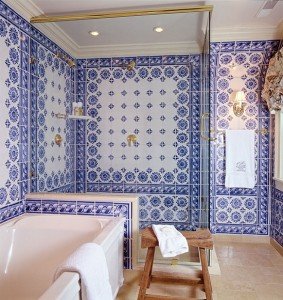
When did you start writing the book?
Like anything else, you have a germ of an idea. The key, of course, was capturing it visually. It’s one thing to write about, but you have to prove to people that there is a reality and [show] what it looks like. Simultaneously I was working on, and still am working on, a memoir, and I segued over into this as a parallel with illustrations. This was about two years in the works. The photography alone was done over a year and a half. … Everything tells a story; everything is a narration. … Everything has to be approachable today. Everything had to invite a potential purchaser or reader to believe that it wasn’t so far off from their reality that they couldn’t bond with it. The other important aspect of the book is the demonstration of range of looks and styles going from a log cabin to a manor-house look yet everything hanging together and relating in its own way. That diversity is what’s so rare today in the design world. Typically you open a design book and after three or four pages you know their look, you know what to expect. The joy of the Inn at Little Washington is there is a tremendous unpredictability and surprise that is waiting around every corner. And the book attempts to capture that. Just when you think you’ve seen it all or got it, there’s more to see and another surprise.
When you were a young boy driving through the town, you would play a game where you would put a finger up and block out anything you considered ugly. Did you block out the old gas station that is now The Inn at Little Washington?
I’ve been tortured thinking lately, “Did I or didn’t I?” Maybe I dozed off at that point. I’m sure I would have if I were completely conscious. In some way I’m sure I did and then re-envisioned it. If you had to reduce the project and the book into one word, it would be transformation. That, for me, is the magic. I was inspired to cook by my grandmother, but I never thought of her as a cook. I thought of her as a magician. She used to send my mother to the butcher to ask for a piece of liver for the cat, but they didn’t have a cat. Then she would make dinner for 12, a delicious rice, liver and mushroom casserole. I really regarded that as magic. You develop intuitive traits that at first you think are normal, and then realize later are not, where a dialogue ensues between you and whatever it is you are contemplating transforming, whether it’s food, a building or sometimes whether it’s a person. When I go to the supermarket—which I rarely do because we have a farm—I will often be repelled, and the food will strike me as artificial or plastic produce. Then when I’m here and something is brought by the farmer or we pick it, it seems to vibrate, and it is alive and it is sending messages and it is stimulating me in my brain to no end. It is screaming with potential. So the same dialogue has now transferred into spaces, especially old houses. You just stand back and they start demanding what they want to be. You’re sort of a vehicle, you’re providing and enabling something to be its ultimate vision. That is what the whole process has been about as opposed to imposing your will on something.
At the end of the book you mention that this project is not done; it’s never going to be done. Do you have anything that you have your eye on that you want to bring in?
This summer we’re opening a wonderful casual lunch restaurant called the Black Swan Tavern. It actually will be in the building that was a tavern built in 1740. We have now five shops that are in front of it, but in the rear there is a veranda and a wonderful view out to the ‘Field of Dreams.’ There is an old ballroom from the 1700s that [George] Washington danced in. We’ll create a casual restaurant there for people who want to visit the town and get a bite and sit outside, and for our guests who are staying a couple of nights, they’ll have an alternative place to go.
*This interview has been edited and condensed.
(May 2015)


